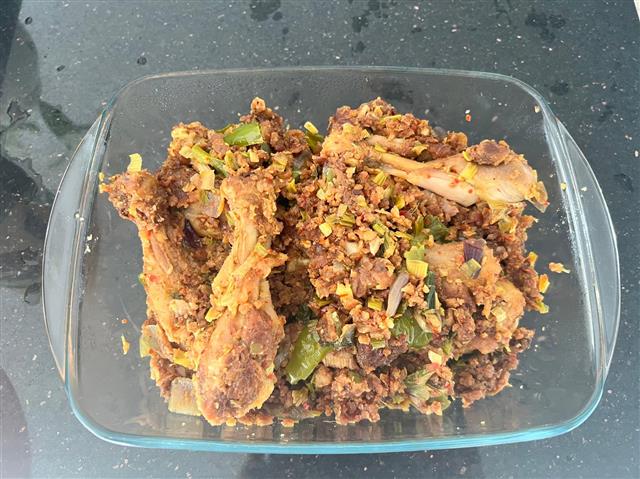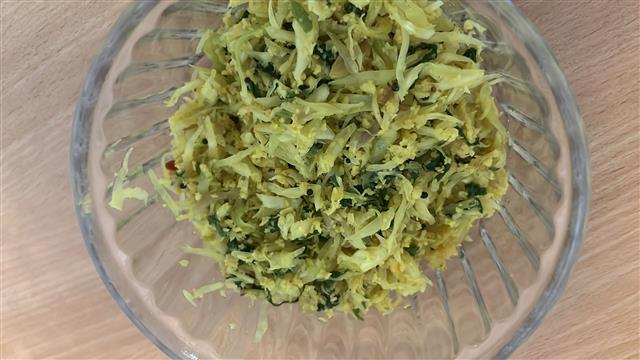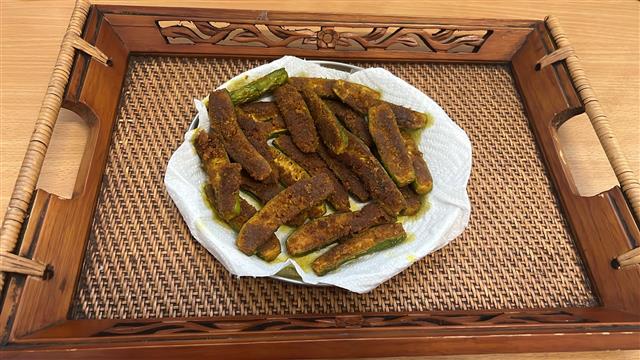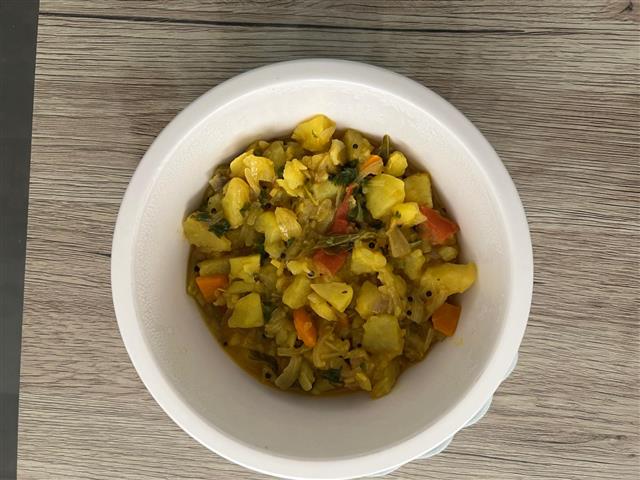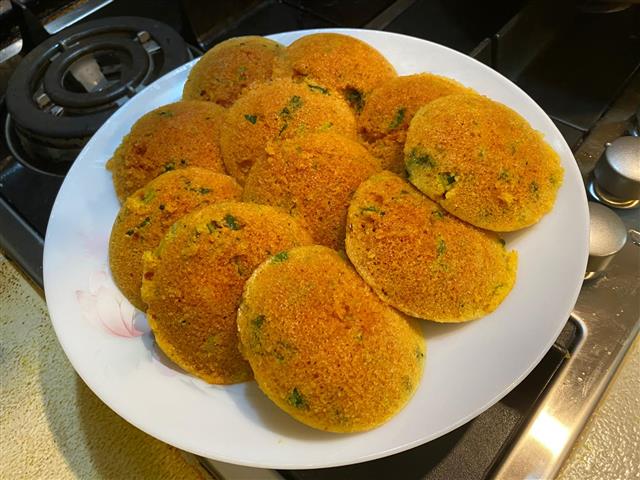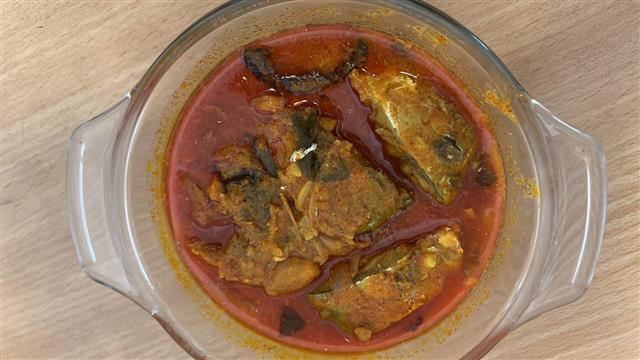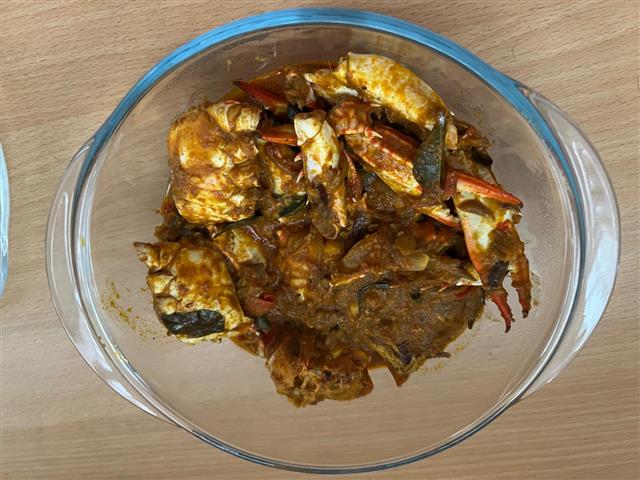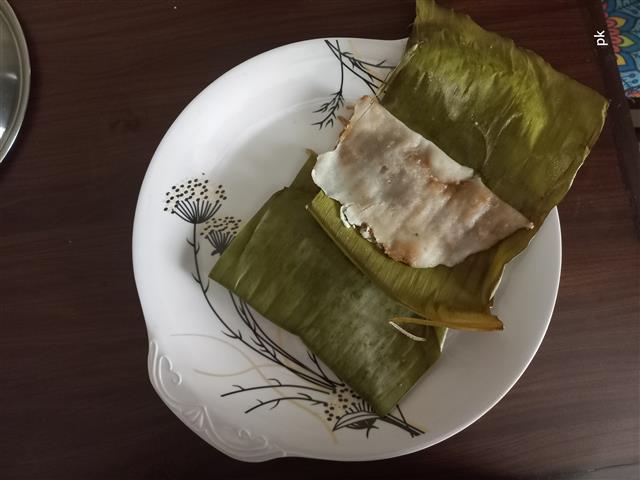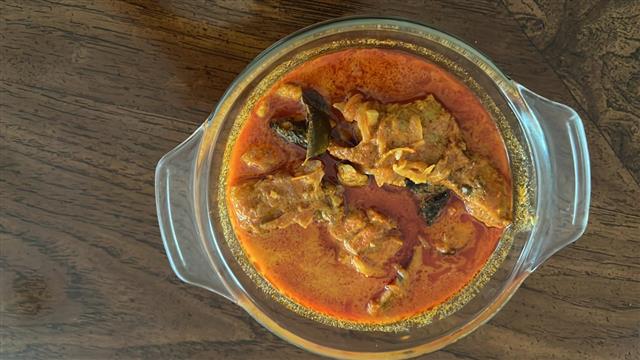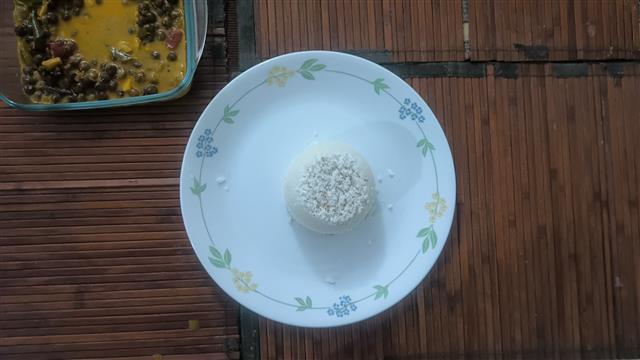
Brinjal Dry Fry
(4 reviews)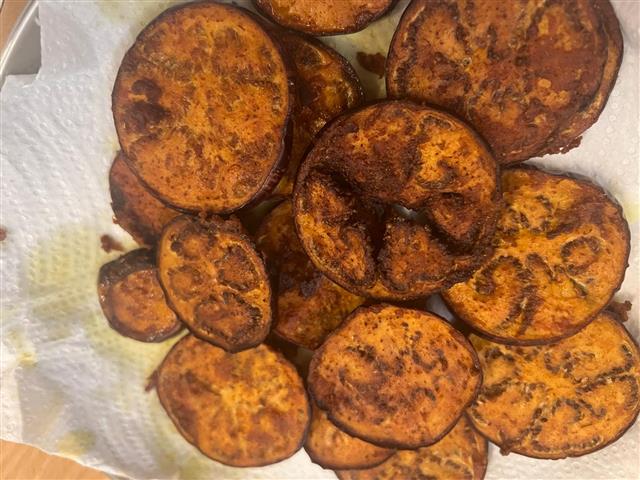
Brinjal Dry Fry or Vazhuthananga Varuthathu is a crispy Kerala-style side dish made with brinjal rounds. The pieces are coated in a spiced paste, dusted with rice flour, and then fried till perfectly roasted.
A dry dish means that there's no gravy here. The eggplant slices are packed with flavour, with crisp edges, a soft centre, and lip-smacking masala in every bite.
Often served alongside rice and moru curry, this fried dish is fiery, tasty, and deeply satisfying.
Ingredients
Directions
- Cut the Brinjal into 1/4-inch thick pieces.
- In a small mixie jar, add red chilli powder, coriander powder, turmeric powder, pepper, ginger garlic paste, salt, and fennel seeds. Grind well.
- Add lemon juice, and keep it aside on a plate. You can marinate it for 10 to 15 minutes to let the masala stick.
- Heat oil in a pan. Coat the slices in rice flour. Fry until crispy and golden brown.
Cooking Tips
• Use firm brinjal: Avoid overripe ones with seeds. Look for smooth skin and light weight.
• Slice evenly: This helps them cook at the same rate. Too thick and they stay raw, too thin and they burn.
• Soak in water: This keeps the slices from oxidising and turning brown.
• Dust just before frying: Don't let the rice flour sit too long or it gets soggy.
• Fry on medium flame: Too hot and they burn outside before cooking through.
Marination Tips
Marinate for 10 to 15 minutes to let the brinjal soak up the flavours and for the masala to stick to the slices.
How to Serve
• With matta rice and a mild curry like moru or parippu
• As a side with curd rice or kanji
• Rolled into chapati for a spicy fried filling
• As a crisp lunch box side or healthy snack
The Story Behind Brinjal Dry Fry
This dish reminds me of my early cooking days. While everyone in my family loved anything brinjal based, I wasn't big fan, except for these fried ones. I remember thinking brinjal as an odd texture and avoided the vegetable for years.
After I watched my mom fry these slices till they turned golden and I had to try my hand at making this Dry Brinjal Fry.
My first attempt wasn't great. The slices were soggy in places and some were burnt. But with practice and with thinner slices, the brinjal crisped up perfectly. It didn't taste like mushy or undercooked. rather, it tasted smoky, spicy, and crunchy. I've since then made this dish numerous times, and extended my cooking vocab to other eggplant sides.
This dry-fry method is different from the Vazhuthananga Theeyal, the Brinjal fry, or the Vazhuthananga Roast, you will find among my recipes.
In this recipe, each slice is fried with its own coating of spices and lightly coated with rice flour to make it crispy.
What Is Brinjal Dry Fry?
In Kerala, vazhuthananga is the word for long, purple brinjal or eggplant. This dry fry is a simple way to make brinjal into something special with just a handful of spices and a pan of hot oil.
Each slice is rubbed with ground masala, dusted with rice flour, and fried until golden. The rice flour gives a light crust while keeping the insides soft. There's no gravy. No onions or tomatoes. Just the brinjal, coated and roasted until it holds its own.
You'll find versions of this dish in many parts of India.
Regional Kerala Variations
Central Kerala
This is where the dry fry is most common. Curry leaves are often added to the hot oil for fragrance. Some people even sprinkle a pinch of garam masala at the end.
Southern Kerala
Here, the spice paste sometimes includes a spoon of tamarind pulp or vinegar for tang. It's slightly spicier too, and some use shallots crushed into the paste.
Northern Kerala
Dry fry is less common. Brinjal is often used in coconut-based curries or made into a theeyal. But when fried, fennel and garam masala are usually added.
Regional Differences
Tamil Nadu – Kathirikai Varuval
Uses curry leaves for garnish. Skips coriander powder and includes onion and cumin seeds, with less fennel seeds in the masala. Sometimes cloves and cinnamon are added.
Andhra – Vankaya Vepudu
Spicier and often uses slit green chillies and a heavier hand with oil. Tamarind is common.
Maharashtra – Vangi Bhaji
Uses goda masala and sometimes roasted peanuts or coconut.
Bengal – Begun Bhaja
Very simple. Just turmeric, salt, and mustard oil , and no spice paste.
North India – Baingan Fry
Brinjal slices are spiced with garam masala and chilli powder and fried till golden.
But Kerala's dry fry stands out for the use of minimal spices, rice flour for texture, and the deep flavour of fennel and pepper.
Ingredient Spotlight
Vazhuthananga (Eggplant)
Rich in fibre, antioxidants, and low in calories. Good for digestion and gut health. Its spongy nature makes it perfect for absorbing spices and oils.
Fennel Seeds
Adds a warm, sweet edge to the masala. Also helps in digestion and balances heat.
Rice Flour
Used here not to thicken but to add a light crisp coating. Just enough to create texture.
Pro Tips for Perfect Results
→ Don't overcrowd the pan: Fry in batches. Overcrowding steams the slices instead of crisping them.
→ Let the masala sit: Marinate for 10–15 minutes if you have time. This helps the brinjal soak in more flavour.
→ Dust evenly: Too much flour will make the slices cakey. A light dusting is enough.
→ Control the heat: Keep it medium. Adjust between batches so nothing burns.
→ Flip few times: Let the first side crisp up before turning.
Brinjal Dry Fry Variations
- With Curry leaves
Add curry leaves to oil for added aroma while frying.
- With Garlic
Sprinkle crushed garlic into the masala for extra depth.
- With Green or Baby Eggplant
Use green brinjal or baby brinjal instead of the long purple ones.
- With Sesame seeds
Add sesame seeds to the rice flour for crunch.
- With Onions
Ad red or white onions for a flavour twist
- Garam masala
Use garam masala finish for a more North Indian touch.
Diet-Friendly Adaptations
Gluten-Free: Naturally gluten-free. Just ensure spice powders aren't contaminated.
Low-oil version: Bake slices at 200°C for 20–25 mins with a brush of oil. Won't be as crisp but still flavourful.
Storing & Reheating Tips
→ Fridge: In an airtight container for up to 2 days.
→ Reheat: In a pan on low heat to crisp them back up. Avoid the microwave for heating.
→ Freeze: Not recommended. Brinjal gets soggy when thawed.
→ Tip: Prepare ahead: Marinate and refrigerate slices. Fry when ready.
Common Mistakes to Avoid
→ Skipping the soak: Brinjal might turn bitter or black.
→ Adding too much flour: Leads to a clumpy, uneven coating.
→ Using high heat: Burns the outer layer before the inside cooks.
→ Skipping lemon juice: The acid balances the richness of the oil and spices.
Frequently Asked Questions
- Can I use baby brinjals?
Yes! Just cut into thin round slices or quarters.
- Is this spicy?
Medium heat. You can reduce chilli or skip pepper for a milder version.
- Can I use gram flour instead of rice flour?
Yes, but the texture will be softer. Rice flour gives a crispier result. Use tapioca flour or corn flour instead.
- Can I reuse the frying oil?
Avoid doing this. Sme of tHe spices may stick to the oil and change the texture of the oil.
Equipment Needed
→ Flat frying pan or iron skillet
→ Knife and chopping board
→ Small mixie jar
→ Bowl for soaking
→ Slotted spatula
